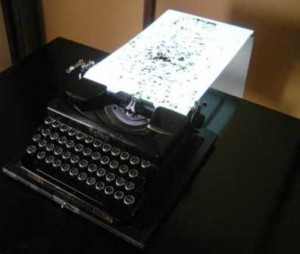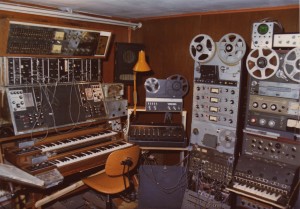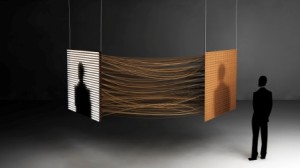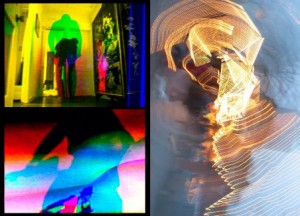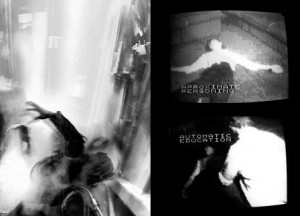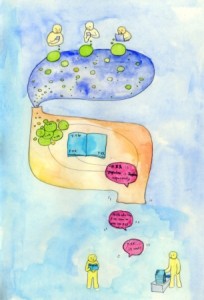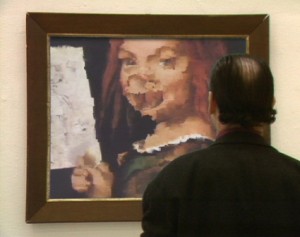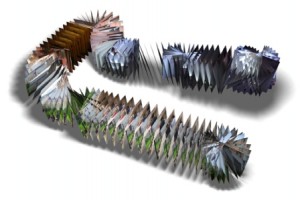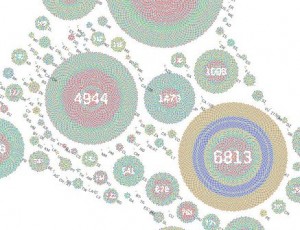Liquid Views 1992

Monika Fleischmann, Wolfgang Strauss
A horizontal screen displays the shimmering surface of a body of water. The sounds made by the water are audible. Coming closer, the observer sees his image reflected in the water. Touching the sensitive screen with ones finger produces waves and causes the image to dissolve. The harder one presses, the more the image disintegrates. When the waves subside, the virtual image appears intact again. Artificial nature is brought to life by artificial intelligence.
At the same time, the surface of the water can be seen to be a large-scale projection. As if through a magnifying glass, the observer sees himself there as an observer of himself. His virtually reflected countenance looks out from there into the space. Thus, the introverted glance beholding ones self seemingly becomes a glance at the Other. At the same time, the intimate act of observation becomes an act of putting an image on public display.
The interactive installation depicts Ovid’s parable of Narcissus as an act of reflection of and on oneself, and translates this into a visual and intellectual process of reflection about image and likeness. Digital virtuality and physical presence blend into a mixed reality experience.
Liquid Views summons up the metaphor of water as mirror in which the observer sees himself confronted by himself, and in which the digital universe is reflected. The interface as such is not consciously perceived. The real situation is sensorially interlinked with the virtual one. The real image of the observer in the fictitious image of the water surface accentuates the duality of our observation of the world and of our self as the basis of our construction of reality.
“Liquid Views” (the 1992-93 version with Christian Bohn) was on exhibit over the course of six years (with three processor replacements) at more than 50 different cultural venues. It brought out the cultural differences among the protagonists. The installation was part of the exhibition staged for the opening of the media museum at the ZKM–Center for Art and Media Karlsruhe in 1997. Since 2008, the reproduced work is being exhibited again.


